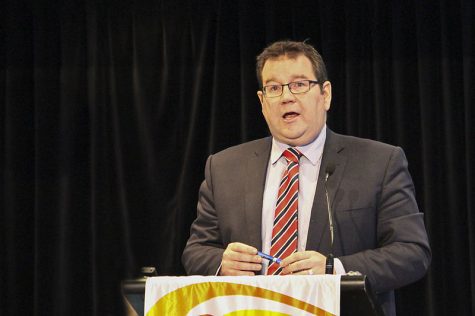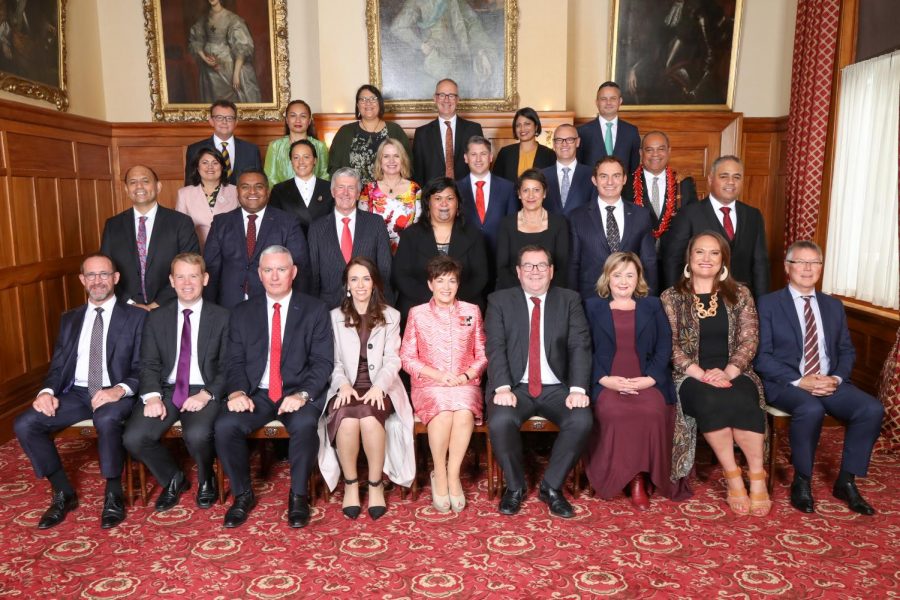New Zealand’s Parliament Is Becoming One of the World’s Most Diverse
A glance at the people and statistics of the island nation’s current government
Governor-General of New Zealand, CC BY 4.0
Prime Minister Jacinda Ardern, first row and fourth from the left, poses for a photo with her cabinet members. These new appointments come after Ardern’s reelection in a landslide victory last month.
Known for kiwi birds, the Lord of the Rings movies, rugby, and the Māori culture, the country of New Zealand has once again gained notability. On November 6th, Jacinda Ardern was sworn into her second term as prime minister alongside twenty cabinet members. This new administration marks historic appointments to the positions of Minister of Foreign Affairs and Deputy Prime Minister.

Nanaia Mahuta, age fifty, has been selected as Foreign Minister. Born in Auckland, and member of the Waikato-Tainui, Ngāti Maniapoto and Ngāti tribes, Mahuta is a relative of the current Māori monarch, Kingi Tuheitia. Initially elected to Parliament in 1996, Mahuta has had over twenty years of experience in government. She will be the first Indigenous woman to head foreign affairs. She is also the first female legislator to wear moko kauae, a sacred Māori facial tattoo. Some of her responsibilities as a minister include advocating for the country’s interests overseas and developing global connections.
As she transitions into her role as Minister of Foreign Affairs, Mahuta is anticipated to begin managing Covid-safe tourism and growing financial ties with Australia and other Pacific Island countries. She also hopes to boost New Zealand’s international status. After her swearing in, Mahuta shared her excitement on Twitter: “Ready to get our government agenda moving and make a difference for our whānau [people] and Aotearoa [New Zealand]!”
Another noteworthy addition to Ardern’s cabinet is Grant Robertson, age 49, the appointed Deputy Prime Minister. Hailing from Palmerston North, Robertson has been a member of Parliament since 2008, previously serving as Minister of Finance, Sport and Recreation, and the Earthquake Commission. He is the first openly gay man to act as Deputy Prime Minister. Robertson has worked closely with Ardern in the past and will have an even more crucial role aiding the Prime Minister in the future, performing duties similar to the Vice President of the United States. The newly appointed minister has stated he is “humbled and honored” to be given the position.

Aside from the cabinet, New Zealand has also shown diversity within its Parliament. The country now leads the world in LGBTQ+ representation at 11% of lawmakers identifying. Though New Zealand does not lead the world in female representation, women make up almost half of the Parliament at 48%, a high percentage in comparison to the international average of 25%. Last but not least, Māori lawmakers compose 21% of the Parliament, exceeding the percentage of indigenous people in the general population. However, it is the lowest proportion of Māori representation since 2014.
While proud of the inclusivity this administration has brought, Prime Minister Ardern has also emphasized that the cabinet appointments were made based on “talent and merit” stating, “these are individuals who have been promoted for what they bring to the cabinet, they also reflect the New Zealand that elected them”.
If there is one positive thing to come out of 2020, it is that New Zealand’s Parliament is beginning to fully represent all who call the country home. Although, there are still improvements that can made. Going forward, many New Zealanders hope to see more Asian and disabled lawmakers represented.




